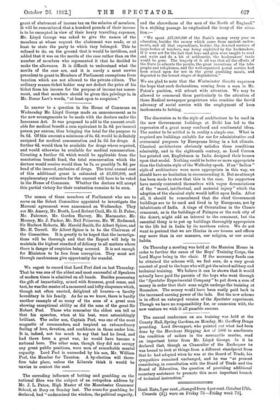The discussion as to the style of architecture to be
used in the new Government buildings at Delhi has led to the expression of a great many confused and sentimental ideas. The matter to be settled is in reality a simple one. What is required are buildings suitable for use for administrative and ceremonial purposes by Europeans living in a hot climate. Classical architecture obviously satisfies these conditions admirably, and in the eighteenth century, as Lord Curzon has pointed out, Englishmen in India designed their houses upon that model. Nothing could be better or more appropriate than the Calcutta style of the Wellesley epoch. If an " Indian " style of architecture were more appropriate in this way, we should have no hesitation in recommending it. But no attempt has been made to show that this is the case. Its supporters have merely contented themselves with vague denunciations of the "moral, intellectual, and material injury" which the adoption of the classical style would inflict upon India. After all, it should be remembered that the chief Government buildings are to be used and lived in by Europeans, not by inhabitants of India. A tinge of Orientalism in the Classio ornament, as in the buildings of Palmyra or the rock city of the desert, might add an interest to the ornament, but the essential thing is to put up buildings thoroughly appropriate to the life led in India by its northern rulers. We do not want to pretend that we are Hindus in our houses and offices any more than in our manners, our religion, or our social habits.


















































 Previous page
Previous page